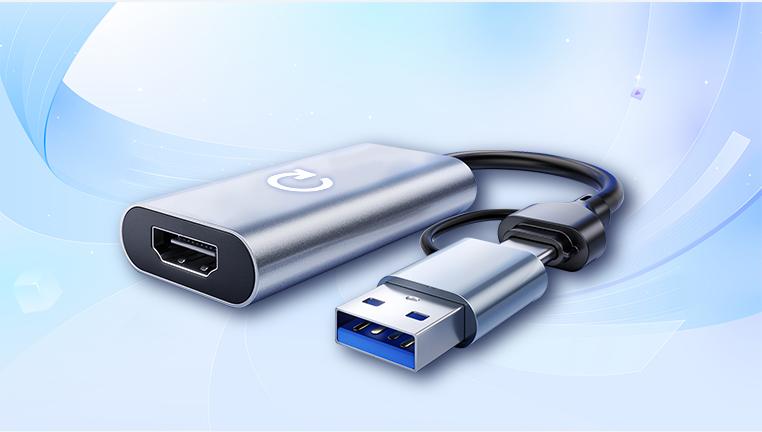Pen drives, also known as USB flash drives or thumb drives, are widely used portable storage devices that offer convenience, speed, and portability. From students carrying assignments to professionals transferring important documents, pen drives have become indispensable in daily digital life. However, like any storage device, they are prone to data loss due to accidental deletion, formatting, corruption, or physical damage. When data loss occurs, specialized pen drive data recovery software can be a lifesaver, helping users retrieve their valuable files safely and effectively.
Chapter 1: Common Causes of Data Loss on Pen Drives
Before exploring recovery software, understanding why data loss happens is essential. Here are the most frequent reasons pen drive users lose data:
1. Accidental Deletion
Users often accidentally delete files or folders from their pen drives without backups. Deleted files usually go to the recycle bin on computers, but if the pen drive is formatted or files are deleted permanently, manual recovery is necessary.

2. Formatting Errors
Formatting a pen drive wipes all the data, either intentionally or by mistake. Sometimes the drive may become corrupted, and the operating system prompts you to format it before use, leading to data loss.
3. Virus and Malware Attacks
Pen drives are vulnerable to viruses and malware, especially when used on multiple computers. Malicious software can corrupt or hide files, making data inaccessible.
4. File System Corruption
Improper ejection, power failures during data transfer, or bad sectors can corrupt the pen drive’s file system, causing the drive to become unreadable or prompt errors like "Drive not formatted."
5. Physical Damage
Though pen drives are generally durable, exposure to water, fire, extreme temperatures, or physical impact can damage the internal circuitry, leading to data loss.
6. Logical Errors
Logical errors, such as partition loss or accidental re-partitioning, also contribute to data loss. The pen drive may appear empty or show wrong capacity.
Chapter 2: How Pen Drive Data Recovery Software Works
Pen drive data recovery software specializes in scanning storage media to locate and restore lost files. Here’s a simplified explanation of how it works:
1. Scanning the Drive
When you run recovery software, it first scans the pen drive’s storage sectors to identify existing and deleted files. There are two types of scans:
Quick Scan: Searches for recently deleted files and those easily recoverable.
Deep Scan: Thoroughly analyzes the drive, reconstructing files from raw data and scanning for lost partitions.
2. File Signature Analysis
During scanning, the software looks for known file signatures — unique patterns identifying specific file types (e.g., JPG, DOCX). This helps recover files even when directory structures are damaged.
3. File Preview
Most modern recovery tools allow users to preview recoverable files (images, documents) before restoring, helping ensure the right files are recovered.
4. Restoration Process
Once files are identified, the software restores them to a safe location, usually on a different drive or partition to avoid overwriting data on the pen drive.
Chapter 3: Features to Look For in Pen Drive Data Recovery Software
Choosing the right recovery tool is critical. Here are important features to consider:
1. Wide File Format Support
The software should support recovery of diverse file types: documents, images, videos, audio, archives, emails, etc.
2. Support for Various File Systems
Pen drives use different file systems such as FAT32. exFAT, NTFS. The software must be compatible with these to recover data effectively.
3. Ease of Use
A user-friendly interface with step-by-step recovery wizards is helpful, especially for non-technical users.
4. Quick and Deep Scanning Options
Flexibility to perform quick scans for minor issues or deep scans for severe corruption increases recovery chances.
5. Preview Functionality
Being able to preview files before recovery saves time and disk space.
6. Safe Recovery
Software that performs read-only operations protects the pen drive from further damage.
7. Compatibility
Ensure the tool supports your operating system (Windows, macOS, Linux).
Chapter 4: Popular Pen Drive Data Recovery Software Options
Drecov Data Recovery
Pen drives are essential tools for quick and portable data storage, but data loss can happen due to accidental deletion, formatting, virus attacks, or corruption. When important files on a pen drive are lost, Drecov Data Recovery offers an efficient and user-friendly solution to retrieve lost data safely.
Drecov Data Recovery is a powerful software designed specifically to recover deleted, formatted, or corrupted files from pen drives and other storage devices. It supports a wide range of file types including documents, photos, videos, audio files, and archives, making it versatile for various recovery needs.
The software uses advanced scanning algorithms that deeply scan the pen drive to detect and restore files that are no longer accessible through regular means. It features both quick and deep scan modes, allowing users to choose a faster recovery or a thorough search based on the severity of data loss.
One of the highlights of Drecov Data Recovery is its simple, intuitive interface, which makes the recovery process accessible even to users without technical expertise. It also provides a preview option, enabling users to view recoverable files before restoring them, ensuring that only the desired data is recovered.
Chapter 5: Step-by-Step Guide to Recover Data from a Pen Drive Using Recovery Software
Below is a general procedure applicable to most recovery tools:
Step 1: Stop Using the Pen Drive
Immediately stop using the pen drive to prevent overwriting lost data.
Step 2: Choose and Install Recovery Software
Download and install your chosen recovery tool on your computer, ensuring NOT to install it on the pen drive itself.
Step 3: Connect the Pen Drive
Insert the pen drive into the computer’s USB port.
Step 4: Launch the Software and Select the Pen Drive
Open the recovery software and select the pen drive from the list of available drives.
Step 5: Choose Scan Type
Start with a quick scan; if unsuccessful, proceed with a deep scan for a thorough search.
Step 6: Preview and Select Files
Once scanning completes, preview recoverable files and select the ones you want to recover.
Step 7: Recover and Save Files
Recover files and save them to a safe location on your computer or external drive — never save recovered files back onto the pen drive.
Chapter 6: Tips and Best Practices for Successful Pen Drive Data Recovery
Act Fast: The sooner you attempt recovery after data loss, the better the chances of success.
Avoid Formatting Immediately: If prompted, avoid quick formatting, as some tools can recover data without formatting.
Don’t Use the Pen Drive: Writing new data can overwrite deleted files.
Use Reliable Software: Opt for well-reviewed, trusted recovery tools.
Backup Regularly: Prevention is better than cure — keep backups of important files.
Chapter 7: When to Seek Professional Data Recovery Services
If the pen drive suffers physical damage, or software recovery attempts fail, professional services may be necessary. Experts use specialized equipment such as cleanrooms and chip-off recovery methods to retrieve data.




